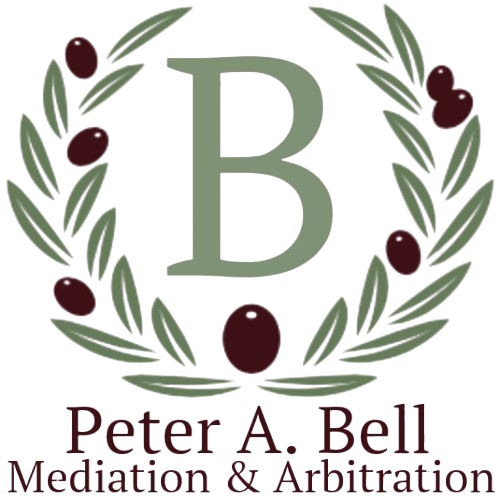Understanding the Process: A Step-by-Step Breakdown of a Successful Mediation Case
Mediation is increasingly recognized as a powerful alternative dispute resolution (ADR) method, offering a confidential, cost-effective, and collaborative approach to resolving conflicts outside the courtroom. For individuals and organizations involved in disputes, understanding the mediation process can be the key to transforming conflict into a constructive solution. In this comprehensive case study, we unravel the intricate steps of a successful mediation case, exploring what happens at each stage, the roles of the participants, and the strategies that contribute to a favorable outcome.
Whether you are a party to a dispute, a legal professional, or simply interested in the dynamics of conflict resolution, this guide will walk you through the real-world application of mediation. We will also highlight essential resources and provide insights into best practices that have made mediation a preferred choice across various sectors, including business, family law, and community disputes.
What is Mediation and Why is it Effective?
Mediation is a voluntary process facilitated by a neutral third party—the mediator—who helps disputants communicate, identify their interests, and negotiate a mutually acceptable agreement. Unlike litigation, mediation empowers parties to retain control over the outcome. The process is confidential, often more expedient, and typically less costly than going to court.
One of the key factors behind mediation’s effectiveness is its focus on collaboration rather than confrontation. The mediator does not impose a solution but instead works to foster understanding and cooperation. This approach often leads to creative, customized solutions that satisfy the unique needs of all parties involved. For a comprehensive overview of mediation’s principles and benefits, review this resource on dispute resolution processes.
Step 1: Pre-Mediation Preparation
The foundation of a successful mediation case is laid well before the actual session begins. Preparation involves several crucial steps undertaken by both the mediator and the disputing parties. Each side must understand the process, clarify its goals, and gather relevant information.
Selection of the Mediator: Parties usually agree on a qualified mediator with experience relevant to the dispute. The mediator’s neutrality and expertise inspire confidence and increase the likelihood of resolution. The selection process may involve interviews, reviewing credentials, and discussing fees and availability.

Initial Communication: The mediator typically contacts each party to explain the process, set expectations, and address any immediate concerns. This is an opportunity to build rapport and ensure all participants feel comfortable with the upcoming mediation.
Document Exchange and Position Statements: Prior to the session, parties often exchange key documents and submit confidential position statements to the mediator. These statements outline each side’s perspective, main issues, and desired outcomes. For example, in a business contract dispute, parties might provide contract copies, correspondence, and evidence of damages. This step allows the mediator to familiarize themselves with the facts and underlying interests.
Proper preparation sets a constructive tone and helps all parties approach the table ready for meaningful dialogue. For best practices in pre-mediation preparation, visit this preparation guide for mediation.
Step 2: The Opening Session
The mediation session typically starts with an opening joint meeting. Here, the mediator outlines the process, establishes ground rules, and emphasizes the importance of respect and confidentiality. The purpose of this session is to create a safe environment for open communication.
Ground Rules: Common ground rules include no interruptions, respectful listening, and a commitment to the process. The mediator reassures the parties that what is shared in mediation remains confidential, fostering a sense of security.
Statements by Each Party: Each party is invited to present their version of the dispute without interruption. This is a critical moment for participants to express their feelings and concerns, often relieving tension and clarifying the real issues at stake.
Establishing a collaborative atmosphere during the opening session is crucial. It encourages transparency and sets the stage for productive negotiations. For an in-depth explanation of what happens during the opening session, see this breakdown of mediation sessions.
Step 3: Exploration and Issue Identification

After the opening statements, the mediator guides the parties through an exploration of the issues. This phase can involve both joint discussions and private caucuses (separate meetings between the mediator and each party). The goal is to clarify misunderstandings, uncover underlying interests, and identify the core issues that must be addressed to resolve the conflict.
Joint Discussions: The mediator may ask open-ended questions to help parties articulate their needs and priorities. For example, in a workplace dispute, the conversation might shift from specific incidents to broader concerns about communication or workplace policies.
Private Caucuses: These confidential meetings allow parties to speak candidly with the mediator about their fears, motivations, and bottom lines. The mediator can use this information to help generate options and bridge gaps between positions. According to the California Courts’ guide to mediation, caucuses are particularly helpful in highly emotional or complex cases.
This stage is essential for transforming entrenched positions into mutual understanding and for laying the groundwork for creative problem-solving.
Step 4: Negotiation and Option Generation
With the issues clarified, the focus turns to negotiation. The mediator facilitates brainstorming sessions, encouraging parties to propose and consider a range of potential solutions. This collaborative environment often leads to the development of options that may not have emerged in direct, adversarial negotiations.
Option Generation: The mediator helps the parties explore various outcomes by asking “what if” questions and suggesting compromises. For instance, in a landlord-tenant dispute, parties might discuss alternatives such as payment plans, lease modifications, or property repairs.
Reality Testing: The mediator assists parties in evaluating the feasibility of each option. This involves examining potential consequences, obstacles, and benefits associated with different proposals. Reality testing ensures that any agreement reached is practical and sustainable.
Overcoming Impasses: Stalemates are common in mediation. Skilled mediators use tools like reframing, incremental bargaining, and exploring underlying interests to help parties move past deadlocks. Patience, creativity, and persistence are vital to this phase.

Learning how to generate and evaluate options is a core skill in mediation. For more on negotiation tactics and collaborative strategies, refer to this Harvard resource on mediation skills.
Step 5: Reaching Agreement and Drafting the Settlement
Once the parties reach consensus on the main issues, the mediator helps them draft a settlement agreement. This document outlines the terms of the resolution and specifies the responsibilities of each party. It is crucial that the agreement is clear, detailed, and addresses all aspects of the dispute to prevent future misunderstandings.
Finalizing the Terms: The mediator reviews the proposed terms with both sides to ensure mutual understanding and satisfaction. Any remaining ambiguities or concerns are clarified at this stage.
Drafting the Agreement: The settlement may be written by the mediator, the parties, or their attorneys. It typically includes the date, names of the parties, recitals of the background, the agreed-upon actions or payments, and any follow-up procedures.
Legal Review and Signing: In some cases, especially those involving complex legal or financial matters, the parties may seek legal review before signing. Once signed, the agreement may be binding and enforceable in court, depending on jurisdiction and context. For more on the legal standing of mediation agreements, see this Cornell Law School explanation of mediation.
Reaching a settlement is often accompanied by a sense of relief and closure. Parties leave with a tailored solution and, often, an improved relationship.
Step 6: Post-Mediation Follow-Up
The mediation process does not always end with the signing of an agreement. Effective case closure often includes follow-up steps to ensure compliance and address any issues that may arise after the session.

Implementation and Monitoring: Parties may agree to check-in meetings or periodic status updates to ensure that the settlement terms are being fulfilled. For example, in employment cases, follow-up might include monitoring workplace changes or payment schedules.
Addressing Breaches: If one party fails to comply, the agreement may specify dispute resolution methods, such as returning to mediation or seeking court enforcement. This proactive planning minimizes the risk of renewed conflict.
Evaluating Outcomes: Some mediation programs conduct post-mediation surveys to assess satisfaction and gather feedback for process improvement. This ongoing evaluation helps refine mediation practices and increase future success rates.
For more on post-mediation best practices and compliance monitoring, check out this guide on post-mediation follow-up.
Case Study: A Real-World Success Story
To illustrate the mediation process, let’s examine a real-world case involving a small business partnership dispute. Two co-owners of a marketing firm found themselves at odds over profit sharing, business direction, and communication breakdowns. The conflict escalated to the point that legal action seemed inevitable.
Preparation: Both parties agreed to mediation and selected a professional mediator with experience in business disputes. They exchanged financial documents, business plans, and emails outlining their grievances. Each prepared a confidential statement for the mediator, explaining their goals and desired outcomes.
Opening Session: The mediator set clear ground rules and encouraged both partners to express their perspectives. Emotions ran high, but the mediator’s calm guidance helped de-escalate tension.

Exploration and Issue Identification: Through joint discussions and private caucuses, the mediator uncovered underlying issues: one partner felt overworked and underappreciated, while the other was concerned about financial risk and business sustainability. These insights shifted the focus from blame to problem-solving.
Negotiation: The partners brainstormed solutions, including revised profit-sharing formulas, clearer job descriptions, and scheduled strategy meetings. The mediator helped reality-test these options, ensuring they were practical and mutually beneficial.
Settlement: The parties drafted a detailed agreement covering profit distribution, decision-making procedures, and dispute resolution for the future. Legal counsel reviewed the agreement, and both partners signed, committing to renewed collaboration.
Follow-Up: The mediator scheduled a check-in after three months to review progress. Both partners reported improved communication, increased productivity, and a stronger partnership.
The Power of Mediation in Conflict Resolution
The journey through a successful mediation case demonstrates the transformative potential of this dispute resolution method. By following a structured yet flexible process—preparation, opening sessions, exploration, negotiation, agreement, and follow-up—parties can address conflicts constructively, preserve relationships, and achieve tailored outcomes that litigation rarely provides.
Mediation is not only about settling disputes but also about empowering participants, fostering understanding, and building skills that can prevent future conflicts. As more individuals and organizations recognize the value of mediation, its role in modern legal and business environments will only grow. For anyone facing a challenging dispute, understanding the mediation process is the first step toward a positive, lasting resolution.
To deepen your knowledge about mediation and its many applications, consider exploring additional educational resources and professional organizations dedicated to alternative dispute resolution and conflict management.
Need help with Understanding the Process: A Step-by-Step Breakdown of a Successful Mediation Case?

